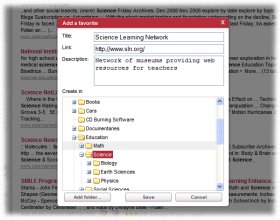|
Web
Education
A formal role-based access control model for security ...
The presented security policy model supports the specification of Role-Based Access Control (RBAC) policies with role hierarchy, object type hierarchy and role mapping in a multi-domain setting. We define a formal model for network state related to locations and provide the mapping of actions to the formal model....
Constructing RBAC Based Security Model in u-Healthcare ...
It is possible to construct a security policy for each enterprise using an RBAC. The basic concepts of role-based access control consist of user (U), role (R), sessions (S), and permission (P) . In addition, role hierarchy, constraints, and privacy purpose group are included.
An analysis of graphs that represent a role-based ...
Abstract. The present work considers structural modification of the role hierarchy in a formal model of the role-based access control. The marked directed graph (the role graph), graphically representing an ordered set of roles, was analyzed to define the ordering relation in the role set and to distribute permissions according to the generated hierarchy....
Establishing role-based access control in the workplace | CIO
The most common type of access control scheme is Role Based Access Control . An RBAC role is a designation. An RBAC role is a designation. On one side, a user is assigned a role, on the other side ...
RBAC – role based access control. A model for controlling access to resources where permitted actions on resources are identified with roles rather than with individual subject identities. Role Enablement Authority - an entity that assigns role attributes and values to users or enables role attributes and values during a user's session....
Attribute-Based Access Control Model •An access control model where subjects’ requests to perform operations on objects are granted or denied based on – •attributes of the subject, •Job, role, clearance, division/unit, location •attributes of the object, •Sensitivity level, type •contextual or environmental condition,...
Access Control Systems: Security, Identity Management and ...
The latest role-based access control (RBAC) standard is also highlighted. This unique technical reference is designed for security software developers and other security professionals as a resource for setting scopes of implementations with respect to the formal models of access control systems....
Context-Dependent Access Control for Web-Based ...
Furthermore, we show how to model this kind of context-dependent access control for web-based collaboration environments by using role-based concepts. Additionally, we present how complex role hierarchies in the context-dependent case can be generated from basic role hierarchies....
A Role and Context Based Access Control Model with UML ...
Home Browse by Title Proceedings ICYCS '08 A Role and Context Based Access Control Model with UML. ARTICLE . A Role and Context Based Access Control Model with UML. Share on. Authors: Yubin Bao. View Profile, Jie Song. View Profile, Daling Wang....
Role-based Access Control - ScienceDirect
Role-based Access Control' RAVl S. SANDHU2 Laboratory for Information Security Technology Information and Software Engineering Department, MS 4A4 George Mason University Fairfax, VA 22030 USA Abstract The basic concept of role-based access control (RBAC) is that permissions are associated with roles, and users are made members of appropriate roles, thereby acquiring the roles' permissions....
|
